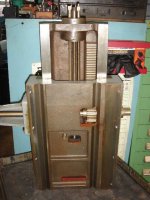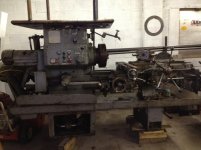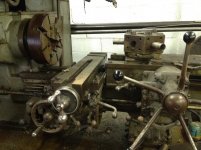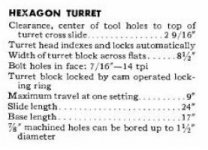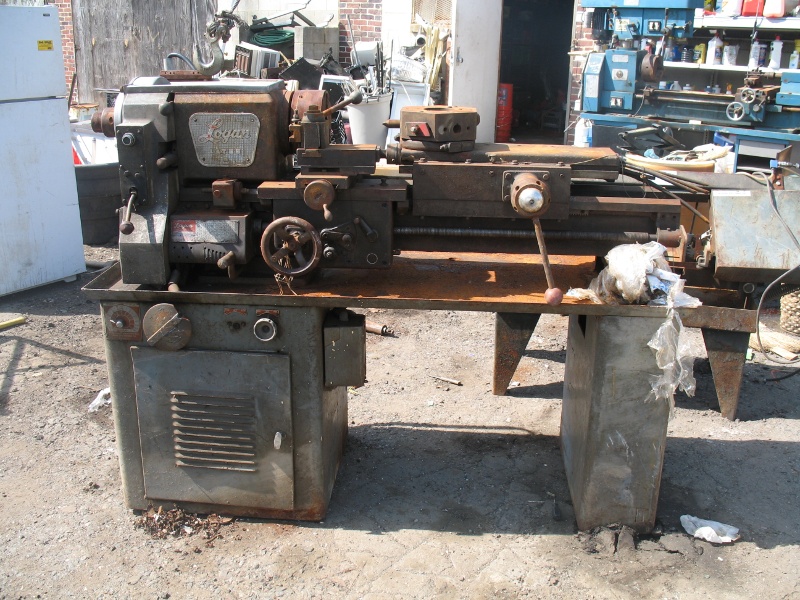Mud
Diamond
- Joined
- May 20, 2002
- Location
- South Central PA
I'm hoping to find machinery guys who have dealt with this. I'm mounting this turret onto my 18" Polamco. It needs to raise about 1/8" more than where it is in this photo, the plywood shown is 1/2" thick.
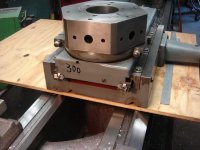
I'm considering just 2 bars across the ways at the front and rear of the turret bed 4" or 6" wide, fitted to the tailstock ways, bolted and pinned to the turret and clamped to the ways the same way a tailstock is clamped. Second idea is 2 bars as described, but longer to clamp to the outside of the carriage ways The third alternative is a full size plate, 15'X17" and 1.5" thick machined to fit and to clamp to the outside of the carriage ways. The turret is 12" wide by 17" long, the ways are 14" across the outside.
Questions - 1 - Does a turret like this need to be supported full length to be sound or would the 2 bars work OK?
2 - Would mild steel be OK or do I need iron (like durabar) to prevent damage to the lathe ways when i move it?
BTW, anyone recognize the manufacturer of the turret? There's no ID mark on it.

I'm considering just 2 bars across the ways at the front and rear of the turret bed 4" or 6" wide, fitted to the tailstock ways, bolted and pinned to the turret and clamped to the ways the same way a tailstock is clamped. Second idea is 2 bars as described, but longer to clamp to the outside of the carriage ways The third alternative is a full size plate, 15'X17" and 1.5" thick machined to fit and to clamp to the outside of the carriage ways. The turret is 12" wide by 17" long, the ways are 14" across the outside.
Questions - 1 - Does a turret like this need to be supported full length to be sound or would the 2 bars work OK?
2 - Would mild steel be OK or do I need iron (like durabar) to prevent damage to the lathe ways when i move it?
BTW, anyone recognize the manufacturer of the turret? There's no ID mark on it.


